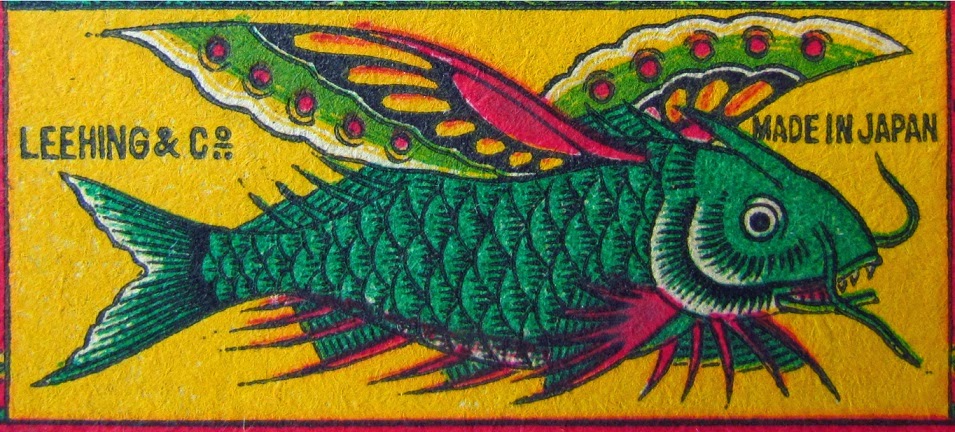The Billiken was a charm doll created by an American art
teacher and illustrator, Florence Pretz of Kansas City, Missouri, who is said
to have seen the mysterious figure in a dream. In 1908, she obtained a design
patent on the ornamental design of the Billiken, who was elephant-like with
pointed ears, a mischievous smile and a tuft of hair on his pointed head. His
arms were short and he was generally sitting with his legs stretched out in
front of him. To buy a Billiken was said to give the purchaser luck, but to
have one given would be better luck.[3] The image was copyrighted and a
trademark was put on the name. After a few years of popularity, like other fad
toys, the Billiken faded into obscurity.
. Read more from Wikikpedia
 |
| The Japanese Billiken (the "i" is missing from the name) |
Billiken
goes to Japan
Throughout Japan representations of the Billiken were
enshrined. Pre-World War II statues of the Billiken can be found in Kobe city's
Chinju Inari and Matsuo Inari shrines. Both of these statues were removed from
display for many years at the onset of the war when foreign deities fell out of
favor.
The most famous representation of the Billiken was in an
amusement park, Luna Park, in the Shinsekai district of Osaka, Japan. In 1912,
he was enshrined in the park as a symbol of Americana and there was revered as
"The God of Things As They Ought to Be". Popular Billiken souvenirs
in the park included dolls and manju (sweet buns filled with red paste). When
the park closed in 1923, the wooden statue of the Billiken went missing.
A replica of the statue was placed in the second-generation
Tsutenkaku Tower in 1980. Due to wear (particularly to the soles of the feet),
the dark, worn statue was replaced in May 2012 with a new one. Presently he
resides on the fifth floor observation deck and has become closely associated
with the tower. Each year thousands of visitors place a coin in his donation
box and rub the soles of his well-worn feet to make their wishes come true. In
October 2008, the Billiken of Tsutenkaku took a journey all the way from Japan
to its founding city of St. Louis where it was visited by students of St. Louis
University High School, whose mascot is also the billiken.
The statue was a permanent fixture in the tower until
September 2005 when it made its first departure and was taken, as an ambassador
of sorts, to Shibuya's Tokyu department store in Tokyo as a part of a fair to
promote Naniwa (traditional Osaka) culture. As a part of the cultural exchange,
a replica of the statue of Shibuya's most famous dog, Hachikō, was sent to
Osaka.
The Billiken was a star in Sakamoto Junji's 1996 comedy
Billiken in which the statue is restored to the Tsutenkaku in an effort to
revive the popularity of the tower and save Shinsekai.
The Billiken also became the namesake of the Japanese toy
& model manufacturing company of the same name.
And 2 versions of the label from Belgium and Sweden:


















